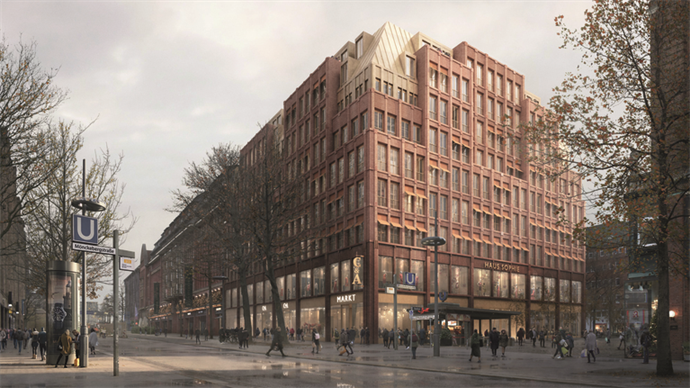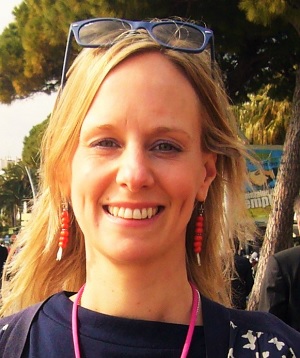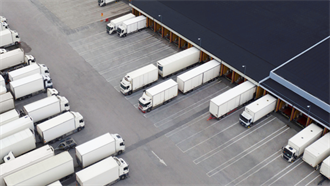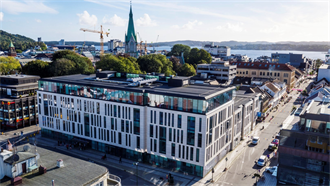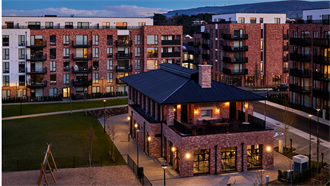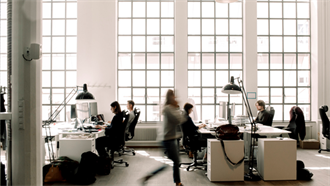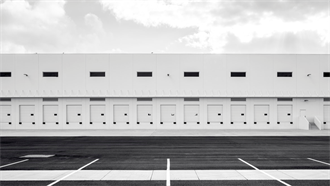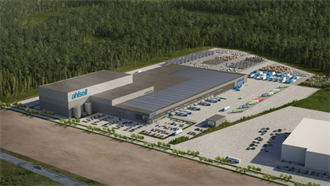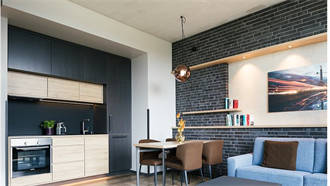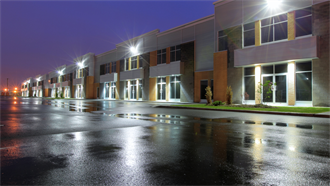From investing in proptech to transforming stores into hotels, Redevco’s relationship with retail real estate is in an important phase of evolution.
A cornerstone of the firm’s ongoing strategy is mixed-use projects, reflecting key urban trends, and also giving the firm a chance to demonstrate its mastery of complex, polyfunctional schemes.
As a case in point, Le 31 in the French city of Lille opened in mid-October, a bold new urban asset which has transformed a tired-old retail scheme from the ground up. As Thierry Cahierre, head of global asset & development management at Redevco, says, ‘Le 31 is not only a shopping experience. It’s a global experience of the future, and the city of the future.
'We have transformed a 25,000 m2 space dedicated wholly to retail into a new building with nine usages. More importantly this mix was carefully curated which enabled us to build a true community with one vested interest. And building the community transcends the occupiers and involves creating a true fanbase by positioning Le 31 as a community on and offline.
‘We’ve created a location with a fantastically diversified mixed-use experience on board, including offices, a hostel, co-working, restaurants, sports facilities and climbing, parking and leisure. We think we’ve also discovered a new way of welcoming a mix of usages, and energising mixed sites.’
An evolutionary path
Redevco, which has its roots in the portfolio management of C&A’s extensive retail real estate assets in Europe, is no stranger to transformation. What started out as a retail-focused mandate managing owned stores and reletting them to other brands at the beginning of the 2000s, evolved into a sophisticated strategy which has involved investing in retail parks as well as designing complex urban destinations, while developing in-house research expertise on the future of real estate.
Marrit Laning, managing director client & fund management at Redevco, stresses the importance of both pursuing major trends and being open to change. ‘We have been undergoing a transformation over the past decade, in which we have critically looked at our portfolio to make sure we are invested in cities that are future proof. We constructed a solid portfolio of high-quality assets.
‘Looking forward, we are aware that retailers may not be able to sustain the rent levels of the past, but space is still scarce in cities. Uses including offices and residential are crying out for space. We have noted that the upper stories of buildings aren’t always utilised in the best way.
This gives us an opportunity to transform buildings to another use or combine uses – by being open to explore new ideas, taking risks, putting a lot of effort in, and making significant investments, we are able to create mixed use buildings that are truly relevant and help accelerate the urban transition towards more sustainable buildings. This cuts both ways; we are able to help cities become more liveable and sustainable and at the same time boost upper floor rents to compensate for decreasing lower floor rents.
‘It allows us to create modern buildings which have greater value and meaning, although it requires a lot of work and a substantial investment. We’re interested in how we can future-proof buildings and make them flexible; in some instances, major structural changes are required, for example, to add more light. But our experience shows us that it is possible and can be really worthwhile.’
Redevco recently unveiled plans to convert a former C&A store into a mixed-use building including two hotels in Hamburg. ‘The architect has been selected, and we’ve announced the tenant – Swiss SV – which will bring lifestyle brand Hyatt Centric and extended-stay brand Stay KooooK to the city when they open in 2025,’ Laning confirms. ‘It is also one of our signature projects in our Mission2040, so the asset will be net-zero carbon.’
Mixed-use potential
For Cahierre, the appeal of mixed-use projects is their ability to both energise tenant operations and meet the needs of today’s city-dwellers. ‘Consumers don’t go into a city just for one thing – just to shop, sleep or work.
'Today, we tend to combine tasks when we plan physical visits. So, we need to change our way of writing the new story of buildings in relation to that. Retail is still an important part of the global experience of mixed-use assets, but it has to diversify, including leisure and other
functions.’
Laning notes that the impetus for combining uses gained new meaning during the global health crisis. ‘When everything was closed down, people did things – and acquired things – in a different way. We became even more convinced about the importance of sustainability and joining the dots. In city centres, we’ve witnessed this evolution of less need for retail and more urgency around the question of what people want to do in city centres today.
‘It’s not just about consuming; it’s about wanting to be more connected and do more things. On a portfolio level, retailers are rethinking how they can interact with consumers, but they are also still investing in interesting assets and flagship locations. Many brands are willing to invest in long-term leases, because people want to go to stores and have good experiences,’ she says.
Adds Cahierre: ‘it’s more than just a shift in retail. This is a very dynamic world and lots of possibilities are arriving to market. There are new retailers and digital native brands trying to establish themselves in the physical realm, while other retailers are rethinking their relationship with city centres. At the end of the day, physical stores are part of a brand’s media and communications and part of a global strategy for connecting with clients and consumers.
'This is the future of physical stores, and its why I’m fully optimistic about retail real estate going forward. I was in Lille just an hour ago, at the opening of Le 31. The main street has been transformed. New tenants are in and excited to be there. It’s a real glimpse of the future.’
Modelling the future
Says Cahierre: ‘Furthermore, our relationships with tenants are changing. More than focusing on leases, the important thing is how we can be in line with the tenant’s financial model. It has to be more win/win, so it’s very important not to just talk about rents, but to really understand their challenges, see how we can find solutions together and establish a partnership. The pandemic has shown that we have to adapt to many things, although tenants actually often like long-term contracts and predictable structures.’
Adds Laning: ‘It’s about building a very layered business model. We’re constantly thinking about what our role should be, how we can create value for our tenants on one hand, and shareholders on the other.’
Notes Cahierre: ‘We also trust deeply in the fact that there is a complementary relationship between physical stores and digital strategy. Physical stores are often a crucial first step in the shopping journey. Stores are part of the media of the brand, and the supply chain, how can they stock things for last mile delivery – the phygital aspect is huge. More layout flexibility is required to adapt stores for the digital age, just as some tenants will need more space in order to use their stores as warehouses as well.’
Redevco is fully up to speed on digital and technological advancement, having made proptech a pillar of its investment strategy. In April of this year, the business invested into the Fifth Wall European Real Estate Technology Fund, as part of its commitment to actively explore new ways to futureproof its assets, develop value-add services for tenants, and solidify the business model.
‘On the proptech side, we also decided to work with Dutch proptech provider Chainels, which helps us support communities and have a better relationship with our tenants. Having 360-degree communication with us adds real value,’ notes Cahierre.
‘We have created a store-as-a-service model to make shops more plug and play for retailers,’ adds Laning. ‘This added-service model is currently being trialled, so we can explore location intelligence and the tech necessary in store to generate more data.
‘It’s part of our broader strategy surrounding environmental, social and governance (ESG) goals. On the one hand, we have sustainability challenges and on the other, commercial ambitions. We are constantly thinking about how we can optimise performance from a real estate standpoint.’
ESG is a bigger topic than ever these days, Laning acknowledges. ‘We have to contribute to making our cities function in more sustainable ways. The property impact derives both from what you put into your buildings, and the tenants themselves. We have a lot of projects in the pipeline to really scrutinise these issues. We are also having conversations with our tenants as to how we can collaborate on making stores more and more sustainable.’
Adds Cahierre: ‘Our dedicated ESG team is helping us shape the future. They help us to be on top on everything from new technology to green leases, while working with tenants to ensure that it doesn’t impact their financials too much.’
Says Laning: ‘Our Mission 2040 is focusing on becoming a net zero carbon company by them. It’s a big challenge, but we’re putting signature projects in place today, including innovations such as cross -laminated timber, reusing concrete and limiting waste, to make sure that we reach our goals.’

